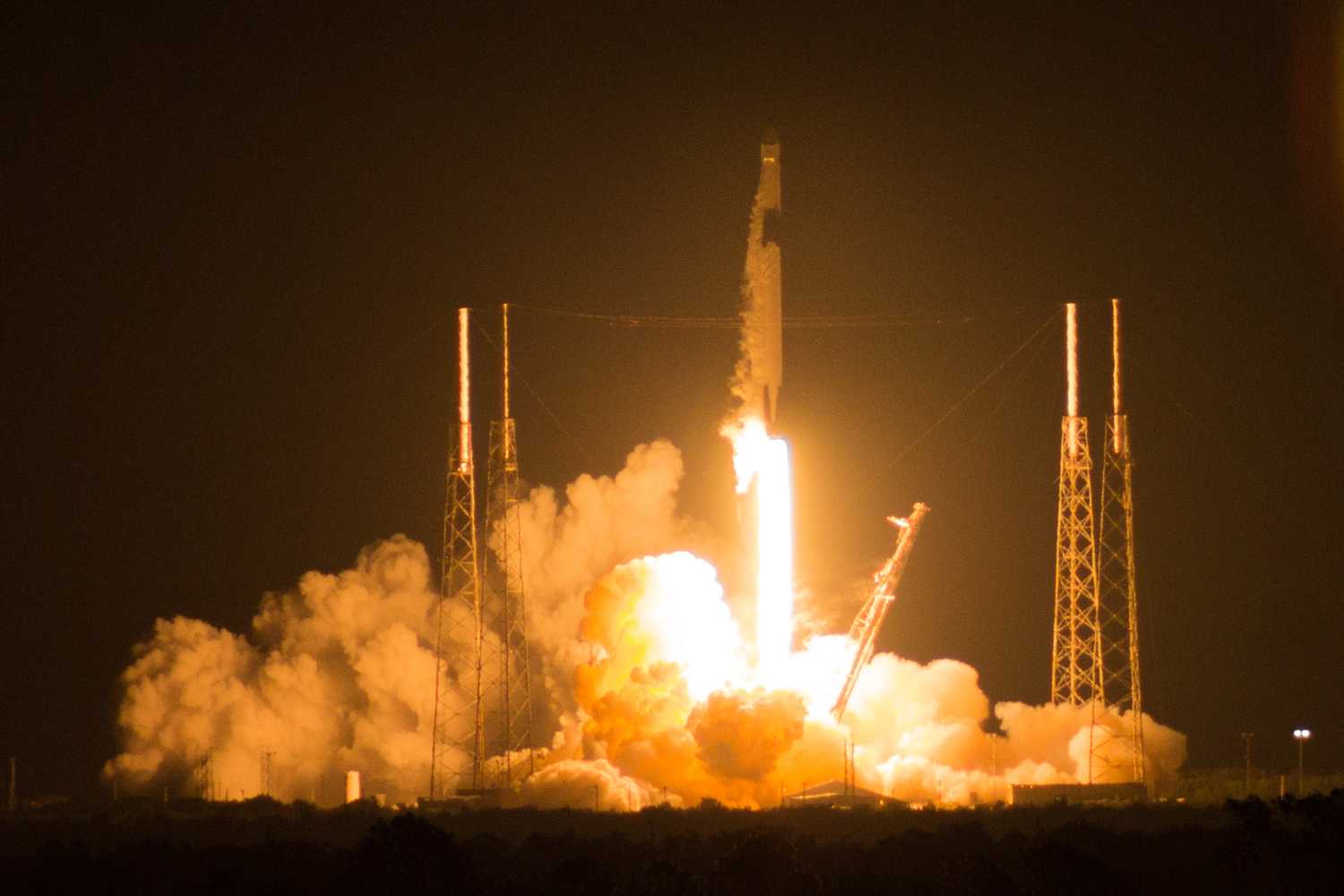Pitt supercomputer flies high in space


A SpaceX Falcon 9 rocket carries the University of Pittsburgh NSF SHREC’s STP-H6-SSIVP supercomputer to the International Space Station at Cape Canaveral on May 4.
On Star Wars Day, May 4, in a galaxy not so far away, Pitt launched its newest supercomputer into the cosmos — marking the first time that the Pitt script logo, engraved in gold on the top of the machine, could be seen in space.
For many engineers at Pitt, that was already an honorable accomplishment. But the main project for the NSF-funded Center of Space, High-performance, and Resilient Computing, or SHREC, was to create a prototype of a supercomputer that could withstand tremendous rocket-launch forces and other environmental hazards in space.
It all started when the aerospace and computing lab, which collaborates with four universities, including Pitt, partnered with NASA in 2016 to build the supercomputer after its less complex predecessor rocketed to the International Space Station earlier that year.
The tiny 2-foot tower, which features two high-definition cameras and several computers, will collect high-definition images of the Earth’s surface and perform data analysis inside its home on the ISS. It’s a revolutionary concept in space technology, according to Alan George, SHREC’s founder and director and chair of the Swanson School of Engineering’s Electrical and Computer Engineering Department.
“The goal is to develop systems that can be more autonomous, like self-driving Ubers, that can gather data from sensors, process it and make decisions,” George said. “Best to do all that processing in space, because there’s too much data to transport to the ground.”
The project gave Pitt students a rare opportunity not just to participate in a NASA space mission, but to actually spearhead the effort. For Kevin Glunt, a doctoral student and the project’s lead mechanical engineer, it all began with a simple phone call.
“The head of the project called me and said ‘What are you doing this summer? We have this project we’re working on for NASA,’” Glunt said. “So of course I said ‘Yes.’”
Glunt said his role as design coordinator was the glue that held the project together.
“I had meetings with NASA, supervised the mechanical undergraduate team and was in frequent communication with our thermal department to make sure our equipment wouldn’t turn to ashes when exposed to the sun outside of Earth’s atmosphere,” Glunt said.
To protect the supercomputer’s technology from the elements — the rocket’s g-force during launch, radiation and heat from the sun and subzero temperatures in open space — Glunt and a team of mostly students designed a small box to hold the equipment. They experimented with mounts on the circuit boards for several months, installed insulators and ordered special lenses for the cameras that could withstand an inordinate amount of force.
Since Pitt doesn’t have an aerospace engineering program, Glunt said learning to apply Earth-centric mechanical engineering concepts to space structures proved difficult, because physics on Earth and in space are very different animals.
“We definitely had a steep learning curve. It took us a few months and several design changes to find our bearings,” Glunt said. “The first table you make is always gonna be wobbly.”
That trial and error process was the key to optimizing the machine’s design, according to Matthew Barry, a mechanical engineering professor who led the thermal modeling for the computer. With such a lack of resources in space, every little improvement counts, and every slight improvement to the supercomputer and its support structures saved money.
“Every cubic foot on a rocket costs money,” Barry said. “So we have to make our cameras, computers and protective gear as small and as lightweight as possible.”
But the team still took design cues from the supercomputer’s first iteration, launched in 2017, so as not to reinvent the wheel. Instead of using standard convection methods to cool the unit, which would allow sand to blow across the computer to control overheating, Glunt said they used induction because of the zero-gravity environment, meaning they had to position the computers and cameras strategically within the casing to avoid direct contact with sunlight.
Glunt said he and his team put the box through rigorous testing before sending it to NASA, ironing out every issue with the thermal and mechanical systems. But some of the testing, he said, will have to be done while the supercomputer is up and running in space. Measures of radiation damage, for example, will be used to optimize protection technology for future space-bound supercomputers and cameras — which is already in the works at Pitt.
SHREC has plans to complete the supercomputer’s third iteration in 2020, with mechanical engineering students starting designs for the machine this summer and a projected launch date sometime in 2022. According to Barry, this model promises improved graphics and high-definition cameras.
In addition, the supercomputers will be performing a number of tasks for the U.S. government. But, due to their confidential nature, Glunt said he can’t reveal most of the projects.
Barry said state-of-the-art space technology is quickly becoming old-fashioned in this day and age, which requires all devices to be automated — the SHREC supercomputer is simply the latest step in pushing the technology forward.
But while the project’s advanced technology is a focus, Barry said the human element of the projects is also important. He’s glad students have been able to contribute to such a technologically advanced project, and hopes they’ll be the backbone of future NASA missions.
“Now that we’ve left the wheelhouse of terrestrial applications and have something orbiting around the earth, I think we’ve motivated a lot of students,” Barry said. “I’ve seen dozens of students walking around wearing NASA shirts. I think everyone wants to be involved in space.”
Contributed reporting by Jon Moss.
Recent Posts
Notes From an Average Girl // Notes on Book Banning
In this edition of Notes From an Average Girl, senior staff writer Madeline Milchman writes…
To Be Honest // Yup, it is that damn phone
In this edition of To Be Honest, staff writer Evin Verbrugge writes about her phone…
Meaning at the Movies | Portraying Toxic ‘Adolescence’
In this edition of Meaning at the Movies, staff writer Lauren Deaton explores the mini-series…
Opinion | Climate change requires radical, immediate action
Contributing editor Emma Hannan talks about the effects of climate change and the actions cities…
Jaland Lowe enters transfer portal, becomes fifth Panther to jump ship
On Tuesday morning, it was announced on X that Pitt sophomore guard Jaland Lowe was…
College Democrats and Republicans debate pressing political topics
Around 100 students gathered to watch Pitt’s College Democrats and College Republicans debate a variety…

